15 Things You Never Knew About The Masters
Published: Last updated:
How well do you think you know The Masters? Find out as we reveal 15 fun facts you may not have known about the year’s first Major
After waiting months to see the world of golf brought back together, the most anticipated week of the year is finally here. The patrons, the Green Jackets, the azaleas, and even the pimento cheese sandwiches are all things that spring to mind come Masters week.
I’m sure you’re familiar with the fact that between them Woods, Nicklaus, and Palmer have 15 Green Jackets and that for every eagle or hole-in-one at Augusta National, the player is awarded with a piece of Crystal. All things I’m sure you know already but are there some things you don’t? Like the fact the sand isn’t actually sand or that after the Masters in April, a ball isn’t allowed to be played by a member until October!
I’m guessing that for even some of you knowledgeable Masters fans there may be a few facts in this list that shock you. Without wasting any more time, here are 15 fun things about The Masters you may have never known.
15 Things You Never Knew About The Masters

Only three pros are current members of Augusta National
A Green Jacket does not earn you entry that easily! You may have thought that earning a Green Jacket would have meant you automatically became a member of this illustrious golf club, well you’d be wrong. If you win the Masters and are awarded the Green Jacket you become an honorary member of the club and are invited back each year to play in the tournament. This does not mean you can play in the Sunday morning roll-up.
The Golden Bear himself, Jack Nicklaus, former amateur standout John Harris, and ten-time LPGA major winner Annika Sorenstam are the only current pro golfers who are members at Augusta National Golf Club. There was a fourth pro and that was Arnold Palmer, but he sadly passed away in 2016.

Augusta is very much a seasonal club
With Augusta being where it is, in this part of Georgia, the temperatures during the summer can consistently sit in the 90s. Couple that with extreme humidity which can sometimes reach 100%, that makes for some rather uncomfortable times on the golf course. This is why the club is closed from May to October each year as they look to maintain its condition in the soaring temperatures and do any reconditioning during this closure.
For most of us, golf is a summer sport but for the members at Augusta, it is very much a pass time for the cooler months. To look after the greens and ensure the course is pristine come the Masters, members can only play the course from October to April.

Each hole is named after a flower or tree grown on the land
The hole names at Augusta National pay tribute to its former life as a plant nursery under the supervision of Baron Louis Berckmans and it was he who decided where to plant all the 18 different varieties of plants that the holes are named after.

Augusta Tradmarked the Green Jacket in 2010
Augusta are very protective of their Green Jackets. They trademarked the name in 2010 and even filed a lawsuit in 2017, preventing the sale of a champion’s Green Jacket by Green Jacket Auctions. In February 2019, Augusta National ordered an annual tournament at Mullion GC in Devon, United Kingdom to stop awarding its winner a Green Jacket as it breaches copyright.
Only first-time winners are allowed to take their Green Jacket off-site. After 12 months, each jacket is kept permanently in the Champions Locker room and worn only during Masters week, strictly within the confines of Augusta National.

Players were assigned caddies
Until 1983, all of the player’s caddies were provided by Augusta National. This meant that past champions such as Ben Hogan Jack Nicklaus, and Arnold Palmer all won with caddies provided by Augusta themselves. They even won with the same caddy multiple times Willie Peterson caddied Nicklaus’ first five victories, while Nathaniel “Iron Man” Avery was on the bag for all four of Palmer’s triumphs.

Why are the bunkers so white?
At Augusta National, there is a total of 44 bunkers, 32 greenside, and 12 in the fairway. The 14th is the only bunkerless hole on the course. For anyone who has ever wondered why and how the bunkers at the Masters are so white, I have the answer, and it may not be what you first thought. Known as ‘Spruce pine’ the sand is in fact granulated quartz, so pure it is used to produce semiconductors for our computers and mobiles.
The sand gets its name from the district it is mined in over at Spruce Pine Mineral District in North Carolina, an area roughly 25 miles wide and 10 miles long. The bunkers at Augusta have been filled with this sand for nearly 50 years and I wouldn’t want to guess the price they have paid since Clifford Roberts insisted it be installed in time for the 1975 Masters Tournament. With the demand for the quartz being so high and the fact this specific type is only mined in North Carolina it sells for well over $10,000 a tonne.

Why does the grass look so good?
As we found out above with the sand, the attention to detail at Augusta National is spectacular and it doesn’t just end at the bunkers. Most flowers and trees come beautifully into bloom just in time for the Masters, but for any bare grass on the course or even anything slightly off-color, rumor has it that it will be painted green ahead of the Masters to ensure the course looks immaculate.
We have all looked at it on television and thought I could hit that tee shot when really it is much harder than we think. The fairway grass is mowed back toward the tee box to ensure you get as little rollout off the tee as possible. If that wasn’t enough, the trees that line each hole are cut so they lean into the fairway making the holes seem much tighter.

The perfect mirror
How do they create that famous sheen on the water around Augusta National? Back in 1996, an American Journalist was fortunate enough to play the course and bold enough to take a sample from the pond in front of the 15th green. He later had it tested and it was confirmed the water contained food dye, similar to that you would use to color icing on a cake.

How are the Azaleas always in bloom at the Masters?
This is yet to be proven and is something that Augusta National won’t talk about but rumor has it that they freeze their sacred plants during the warmer months so they will be in full bloom come the week of the Masters in April.

No phones allowed!
If your daily screen time is more than a few hours or you like checking your phone every few minutes, the Masters may not be for you! There is a complete phone ban at Augusta National Golf Club. Beware of the undercover Augusta officials in and amongst the crowd. If you’re spotted with a phone on site, even in your pocket, you will be escorted off the premises.
Cameras are allowed but only on the practice days – Monday to Wednesday – but are banned on tournament days. There are even strict permissions when it comes to using electronic watches and fitness bands, but as long as you aren’t using them for calls, messaging, videos, etc. You will be fine. It’s best to be well-prepared before you go and may be recommended that you leave any devices where you’re staying for the week.

The hidden living quarters just for amateurs
Somewhere you may think that only past champions and Augusta members get the privilege to stay, but the week of the tournament, the Crow’s Nest gives a unique experience for six amateurs to stay on the property during the Masters. Getting the chance to stay in the Crow’s Nest represents the privilege of being an amateur at the masters. Although no amateur has ever won the Masters, several have gone on to later win the tournament as professionals. This list includes the likes of Jack Nicklaus, Tom Watson, Phil Mickelson, and Tiger Woods.
Located up some steep stairs on the third floor of the Augusta National Clubhouse, the Crow’s Nest is nothing more than a simple 30 by 40ft room in the roof of this iconic building. The Classic, vintage-looking sleeping quarters are separated by partitions creating four bedrooms. There is also a full bathroom and seating area in the middle with a games table, sofa, telephone, television, and even WiFi!

When was the first Green Jacket?
When Augusta opened in January 1933, Bobby Jones suggested to business partner Clifford Roberts that former captains of the club should wear jackets. The only issue was finding the right color. But whilst walking the Augusta property Roberts’ eye was drawn to a particular leaf below the Azalea. Known as verdant green, the choice was made and a legend was born. Four years later in 1937, Roberts decreed that every member attending the Masters should wear his “Green Jacket” so that visitors could pick them out from the crowd and ask them for directions.
The first professional to receive one was Sam Snead in 1949. Accepting it from the hands of Jones himself, Snead must have had mixed feelings as he pulled on the size 40, Brooks Uniform Company jacket for the first time.
Bright green and made from an inexpensive wool polyester mix, it may have left Snead underwhelmed but fast forward 71 years and that single item regularly tops the most wanted list of every PGA Tour professional. Not that many Augusta National members, honorary or otherwise, have the opportunity to show off the most famous jacket in sport.

The cheapest seats in the house
For just $30 you can reserve yourself a front-row seat at Amen Corner! Behind the 12th tee, beside the green at No. 16, or of course surrounding the 18th green on Sunday. Although you can’t pay $30 and guarantee yourself a seat around some of these iconic locations at Augusta, you certainly have a good shot. When you have acquired your vibrant embroidered green chair from the Masters shop you must fill in the name card located in the plastic sleeve on the back of the chair.
The next step is to find somewhere to put that chair. You can set your chair in hundreds of random spots around the course but if you’d like to get a prime spot at Amen Corner you need to be quick, but make sure you don’t run! It’s not like the WM Phoneix Open where you stampede to the 16th Grandstand. Running is not allowed at Augusta so best practice your power walking.
Chairs cannot be left overnight so patrons queue bright and early to ensure a good spot when the gates open at 8 am. Once the gates are open the well-prepared patrons will make a beeline for their required location on the course. Fortunately, once your chair is down you can leave it there and return to it throughout the day. The unwritten Masters rule is that anyone can sit in any chair on the course until the owner of said chair returns and asks to sit back down.

Bridges named after pros
Something you see every year at the Masters but never really pay any attention to, the iconic bridges! At Augusta, there are three bridges dedicated to legendary golfers in honor of their achievements at the iconic venue.
Arguably the most famous of the three, Hogan’s Bridge to the left of the 12th Green, honors Ben Hogan’s then-lowest 72-hole score in Masters history which was 274 in 1953. The bridge was set in stone before the 22nd Masters in 1958.
On the following hole, in front of the 13th tee, crossing Rae’s creek is the Nelson Bridge. The bridge commemorates Byron Nelson’s performance on this particular section of Amen Corner with a birdie on 12 and an eagle on 13 on his way to victory in 1937.
The final of the three bridges sits to the left of the 15th green, Sarazen’s Bridge was unveiled the day before The Masters in 1955. The bridge commemorates Gene Sarazen’s double eagle on his final round in 1935. This meant he would tie the lead with Craig Wood and go on to win the following day in the tournament’s only 36-hole playoff.
About the Author

Will Shreeve-Peacock – Golf Equipment Writer
Will is an expert in golf shoes, GPS watches, rangefinders, and training aids.
He has a degree in journalism from Sheffield Hallam University and four years’ experience working in golf retail with American Golf where he was trained by a host of the big-name manufacturers.
A six-handicapper, Will has played golf for more than a decade and is a member at Burghley Park Golf Club in Stamford, Lincolnshire.
-
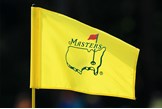 15 things you didnt know about the Masters
15 things you didnt know about the Masters
-
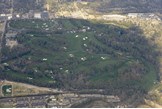 Augusta is shut throughout the summer months
Augusta is shut throughout the summer months
-
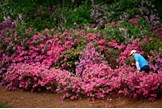 The Azalea's in full bloom at Augusta
The Azalea's in full bloom at Augusta
-
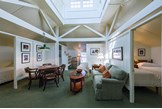 The Crow's Nest on the third floor of the clubhouse at Augusta National
The Crow's Nest on the third floor of the clubhouse at Augusta National
-
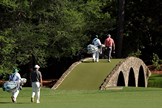 Hogan's Bridge beside the 12th Green at Augusta
Hogan's Bridge beside the 12th Green at Augusta
-
 Jack Nicklaus and Arnold Palmer at the Masters
Jack Nicklaus and Arnold Palmer at the Masters
-
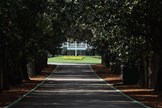
-
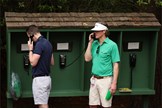 No Mobile Devices are allowed on site at Augusta National
No Mobile Devices are allowed on site at Augusta National
-
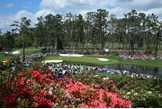 Plants and Scrubs at Augusta National
Plants and Scrubs at Augusta National
-
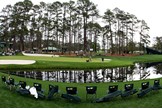 Augusta seating on the side of hole 16
Augusta seating on the side of hole 16
